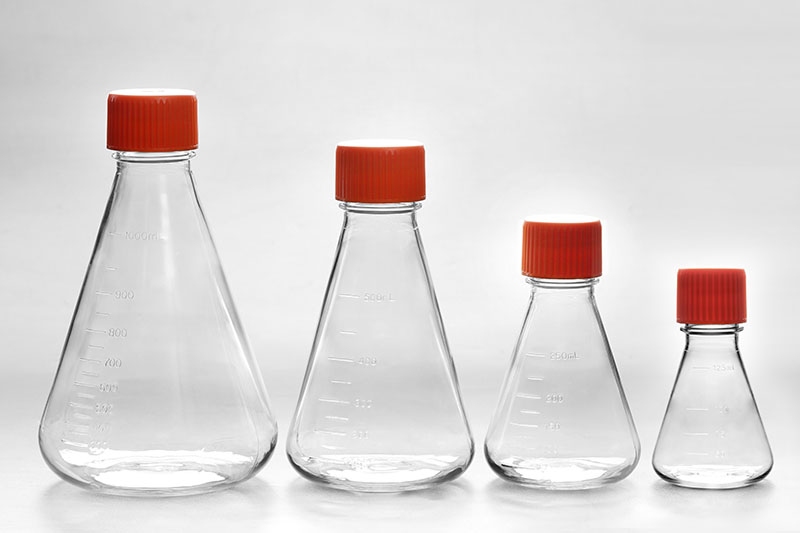The erlenmeyer shake flasks is a commonly used cell consumable in the cell culture process. It is mainly suitable for full-time suspension cell culture, medium preparation or storage, and can be used with a large-capacity culture shaker.
Cell culture requires high environmental requirements, such as sterility, suitable temperature, pH, and certain nutritional conditions. These conditions need to be achieved with the help of erlenmeyer shake flasks. Therefore, erlenmeyer shake flasks have strict requirements from material to manufacturing process. erlenmeyer shake flasks generally use bisphenol A-free PC materials and PETG materials, and the processing adopts a one-step injection stretch-blow molding process, which is also called a one-step injection stretch-blow production process. Its working principle is to first inject the molded blank by an injection molding machine, stretch the hot parison longitudinally, and then pass in compressed air to stretch it laterally to obtain a product with the same shape as the mold cavity.
The injection, stretching, and blow molding processes of this processing method are completed in sequence on one equipment. High-speed molding can be achieved without repeated heating of the preform. The most complex process parts are discarded and the most optimized process structure is used. Directly realize the stable production of products, improve the qualified rate of products, and save energy technology.
The erlenmeyer shake flasks produced by the injection stretch-blow production process has a smooth and round mouth, better contact and tightness with the bottle cap, and more pressure resistance, which lays the foundation for the smooth progress of cell culture work.
The FAI climbed 5.9 percent year-on-year in the first 11 months of 2018, quickening from the 5.7-percent growth in Jan-Oct, the National Bureau of Statistics (NBS) said Friday in an online statement.
The key indicator of investment, dubbed a major growth driver, hit the bottom in August and has since started to rebound steadily.
In the face of emerging economic challenges home and abroad, China has stepped up efforts to stabilize investment, in particular rolling out measures to motivate private investors and channel funds into infrastructure.
Friday's data showed private investment, accounting for more than 60 percent of the total FAI, expanded by a brisk 8.7 percent.
NBS spokesperson Mao Shengyong said funds into weak economic links registered rapid increases as investment in environmental protection and agriculture jumped 42 percent and 12.5 percent respectively, much faster than the average.
In breakdown, investment in high-tech and equipment manufacturing remained vigorous with 16.1-percent and 11.6-percent increases respectively in the first 11 months. Infrastructure investment gained 3.7 percent, staying flat. Investment in property development rose 9.7 percent, also unchanged.
 English
English



















































